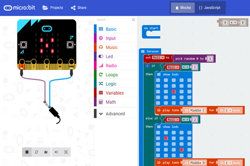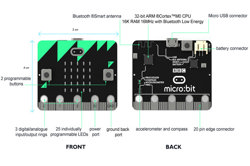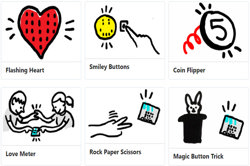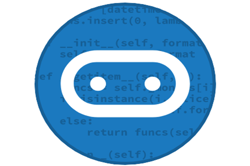DT Challenge - 5/6 Blockly - Biology
Learn about the differences between animals, and how Biologists use programming to help them do science! We'll learn about the features of animals, structural and behavioural adaptation, and how to use these properties in order to identify them.
So hop in and learn some science! This course is based on the Year 5 science and the 5-6 Digital Technologies curriculum.
To do the challenge offline use this guide to support students.
Additional details
| Year band(s) | 5-6 |
|---|---|
| Content type | Tools for learning, Student challenges |
| Format | Interactive |
| Core and overarching concepts | Computational thinking, Algorithms, Implementation (programming) |
| Australian Curriculum Digital Technologies code(s) |
AC9TDI6P02
Design algorithms involving multiple alternatives (branching) and iteration
AC9TDI6P05
Implement algorithms as visual programs involving control structures, variables and input
AC9TDI6P06
Evaluate existing and student solutions against the design criteria and user stories and their broader community impact |
| Technologies & Programming Languages | other programming languages |
| Keywords | Data: Collection, Representation, Interpretation, Specification, Algorithms, Implementation, Interactions, Australian Computing Academy, Blockly, DT Challenge |
| Organisation | Australian Computing Academy |
| Copyright | University of Sydney. Creative Commons BY 4.0. |
Related resources
-

Micro:bit: Start Coding with the JavaScript Blocks Editor
A range of resources to get you started with the micro:bit - a tiny programmable computer.
-

Features of the micro:bit!
Learn about the micro:bit.features.
-

Micro:bit projects
Check out these projects that you can build with your micro:bit.
-

micro:bit Tutorial Series Part 1: Getting Started
In this episode, we examine the micro:bit and program it to scroll the phrase "Hello!" across the LED display.
-

micro:bit Starter (Blockly)
Use this tutorial to learn how to program the BBC micro:bit using the Blockly visual programming environment. (Requires registration for free log-in for Australian Schools).
-

DT Challenge - 5/6 Blockly - Chatbot
Write code to create word games and develop a Pirate Chatbot. Arrr, me hearties!
-

DT Challenge - 5/6 Blockly - Space Invaders
Use Blockly to learn how to create a Space Invaders game!
-

DT Challenge - 5/6 Blockly- Turtle
Write code to control a turtle and draw fantastic pictures!
